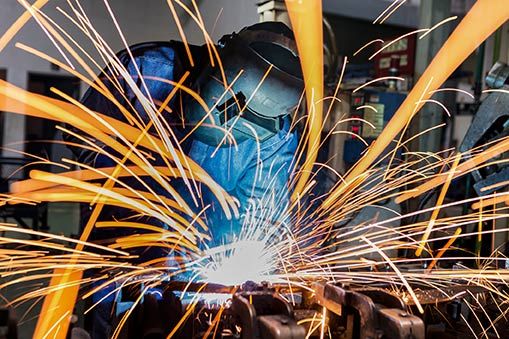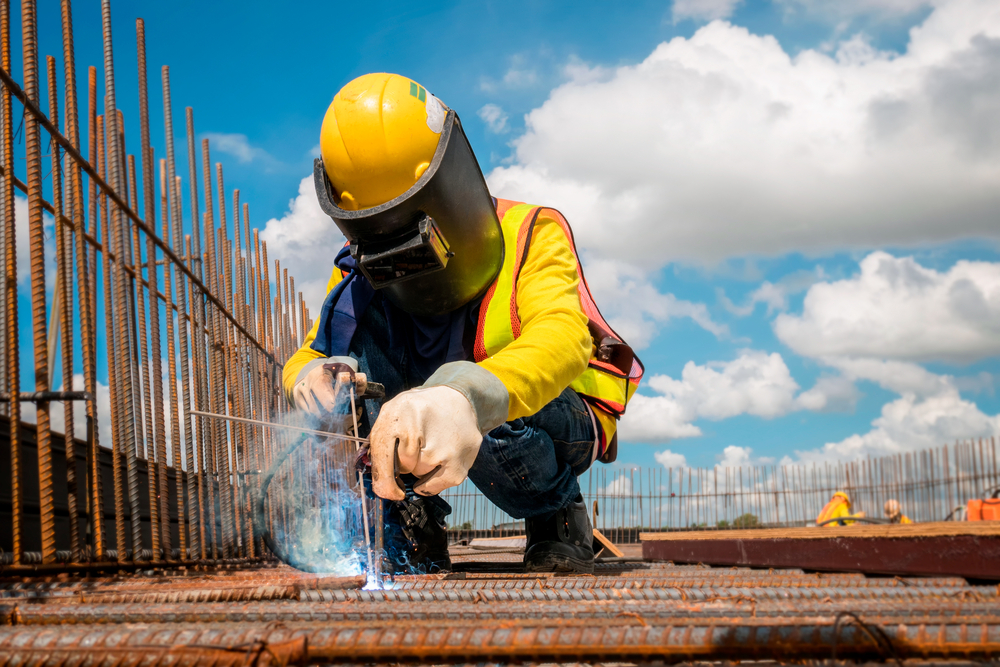Everything about Welding: Secret Insights Into Techniques and Best Practices for Success
Welding incorporates a range of methods, each fit for specific materials and applications. Comprehending these methods, such as GMAW, SMAW, and TIG, is essential for achieving ideal outcomes. Furthermore, the right equipment and safety and security techniques can not be ignored. As prep work and fixing play crucial roles in the welding procedure, understanding these components can greatly improve the top quality of the last item. What are the essential elements that assure an effective weld?
Recognizing Various Welding Techniques
Welding techniques incorporate a selection of approaches, each matched to details applications and products. Amongst the most usual techniques are Gas Steel Arc Welding (GMAW), Shielded Steel Arc Welding (SMAW), and Tungsten Inert Gas Welding (TIG) GMAW, likewise understood as MIG welding, is prominent for its speed and convenience, making it excellent for thin products. SMAW, or stick welding, is preferred for its simpleness and performance in outside environments, especially with thicker steels. TIG welding offers accuracy and control, making it appropriate for intricate job and non-ferrous metals (Fabrication). Each technique has its one-of-a-kind advantages and considerations, enabling welders to select the very best technique based upon the project's requirements, material type, and wanted results. Understanding these methods is vital for successful welding
Necessary Welding Tools and Tools
While numerous welding methods need specific abilities, the appropriate devices and tools are just as vital for accomplishing quality results. Essential welding tools consists of welding equipments, which differ depending upon the technique-- such as MIG, TIG, or stick welding. Safety equipment, including aprons, gloves, and headgears, warranties security and comfort during the process. In addition, clamps and fixtures help secure materials in position, guaranteeing precision in welds. Consumables like welding rods, cable, and protecting gas are also critical components that affect the top quality of the weld. Moreover, devices such as mills and cutters assist in surface prep work and post-weld finishing, adding to a professional end result. Buying premium devices eventually boosts the performance and efficiency of welding projects.
Safety And Security Practices in Welding
Correct safety practices are necessary in the welding market to safeguard employees from prospective risks. Welders have to put on appropriate individual protective devices (PPE), consisting of safety helmets with correct shading, gloves, and flame-resistant clothing. Adequate air flow is important to minimize direct exposure to harmful fumes and gases generated throughout the welding procedure. In addition, workers must be learnt the proper handling of welding devices to stop mishaps. Fire security actions, such as keeping flammable materials away from the welding area and having fire extinguishers easily available, are required. Regular examinations of tools and offices can aid determine possible threats before they bring about accidents. By sticking to these safety techniques, welders can produce a safer working setting and decrease risks associated with their profession.
Preparing Products for Welding
Preparing materials for welding is a crucial action that significantly affects the top quality and stability of the end product (Montana Mobile Welding and Repair Welding). Correct prep work includes cleaning up the surface areas to eliminate pollutants such as oil, dust, and corrosion, which can jeopardize the weld. Methods such as grinding, fining sand, or making use of solvents are generally used to attain a tidy surface. In addition, making certain that the materials mesh well is essential; spaces can cause weak welds. It's also essential to think about the positioning and positioning of the elements, as this will affect the convenience of welding and the final end result. Choosing the ideal filler material and making certain compatibility with the base metals is crucial for attaining strong, sturdy welds.
Tips for Achieving High-Quality Welds
Attaining high-grade welds requires interest to detail and adherence to finest methods throughout the welding procedure. Proper joint preparation is essential, guaranteeing surfaces are clean and free from contaminants. Selecting the appropriate filler product and welding method based upon the base steels is critical for excellent bonding. Maintaining consistent travel speed and angle while welding can advertise and stop problems uniformity. Furthermore, controlling warm input is crucial; too much heat can cause bending and compromised joints. If needed, consistently checking the welds throughout the procedure enables for instant changes. Employing ideal post-weld treatments, such as cleansing and stress alleviation, can boost the longevity and stability of the weld, inevitably ensuring a successful result.
Fixing Common Welding Issues
Welding often presents obstacles that can affect the quality and honesty of the last product. Usual problems such as porosity, irregular weld grains, and getting too hot can develop, each requiring specific fixing techniques. Understanding these problems is important for welders to boost their abilities and attain optimal results.
Porosity Troubles Explained
Porosity can typically be forgotten, it continues to be an important issue in welding that can compromise the integrity of a finished item. Porosity refers to the existence of tiny gas pockets within the weld grain, which can lead and compromise the joint to early failure. This issue commonly occurs from contaminants, moisture, or incorrect protecting gas insurance coverage during the welding process. To reduce porosity, welders must confirm that the base products are dry and clean, use ideal shielding gases, and maintain consistent welding specifications. Consistently inspecting the equipment and environment can likewise help determine prospective concerns prior to they manifest in the weld. Resolving porosity effectively is crucial for accomplishing solid, long lasting welds that satisfy high quality requirements.

Inconsistent Weld Beads
Irregular weld grains can considerably affect the quality and strength of a completed item. Numerous aspects add to this problem, including improper travel rate, inaccurate amperage setups, and inconsistent electrode angles. When the welder moves also promptly, a bead may appear slim and lack penetration, while moving too slowly can trigger too much build-up. Furthermore, using the incorrect amperage can lead to either damaging or extreme spatter, both of which compromise weld integrity. The welder's strategy, such as irregular lantern activity, can also result in irregular grain appearance. To reduce these troubles, welders should concentrate on more information maintaining steady, regulated motions and making sure appropriate equipment settings to attain uniformity in their welds. Consistency is essential to accomplishing solid and trustworthy welds.
Getting Too Hot and Bending Issues
Too much warmth throughout the welding procedure can cause substantial getting too hot and contorting problems, impacting the architectural honesty of the workpiece. These troubles typically materialize as distortion, which can compromise positioning and fit-up, making further setting up testing. Aspects contributing to overheating consist of the option of welding specifications, such as voltage and take a trip speed, in addition to the type of product being welded. To alleviate these problems, welders should keep constant travel rate and suitable warm input while keeping track of the work surface temperature level. Additionally, preheating or post-weld warm therapy can help minimize stress and anxieties brought on by rapid air conditioning - Belgrade Fabrication. Normal evaluation and adherence to ideal techniques are vital in preventing overheating and making certain the durability and reliability of welded frameworks
Frequently Asked Concerns
What Are the Occupation Opportunities in the Welding Sector?
The welding industry supplies diverse profession opportunities, including placements as welders, inspectors, engineers, and instructors. Experts can work in manufacturing, building and construction, aerospace, and automotive sectors, taking advantage of strong demand and competitive incomes in different functions.
Exactly How Can I Improve My Welding Rate Without Compromising Quality?
To enhance welding speed without compromising top quality, one should exercise reliable strategies, preserve tools, optimize setups, and boost hand-eye sychronisation. Routine training and looking for comments can additionally considerably add to accomplishing quicker, high-grade welds.
What Qualifications Are Offered for Welders?
Numerous accreditations exist for welders, consisting of those from the American Welding Society (AWS), the National Facility for Building Education and Research (NCCER), and numerous industry-specific companies. These qualifications enhance employability and show skill efficiency.
Exactly How Does Welding Impact the Characteristics of Metals?
Welding influences the buildings of metals by modifying their microstructure, which can lead to adjustments in firmness, strength, and ductility. Warmth input and air conditioning prices during the procedure considerably influence these material features.
Can I Weld Dissimilar Metals Together?
